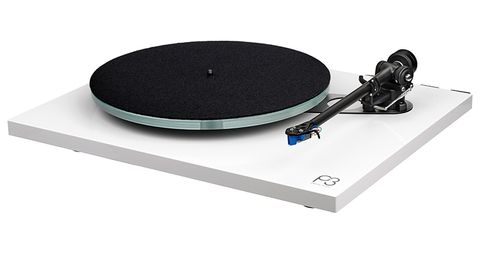Linn’s LP12 was the undisputed vinyl monarch for the majority of the 1970s and 1980s. New competitors to the Sondek’s championship came and went, but the Sondek remained on top. Ironically, because they didn’t turn out to be nearly as good, these aspirant vinyl kings were unfairly neglected and dismissed. This always struck me as odd — it’s like stating that if your song isn’t at the top of the charts, no one will play it on the radio or stock your recordings…
As a result, there are a lot of great high-end turntables out there that most people have either forgotten about or never heard of in the first place. Logic’s DM101, like Ariston’s RD11, the JBE, and the original Dunlop Systemdek, is a deck like this. No, it’s not the best gadget for playing a Long Playing record, but it’s well worth a look for old vinyl fans.
It was a costly piece of equipment in 1981, costing £299. It was a well-made, belt-driven design, similar to the Linn, with a quarter-inch thick steel mounting plate to decrease vibration. It used the renowned Philips/Impex 24 pole AC synchronous motor. The solid Medite plinth, measuring 356x483x153mm, was finished in satin black and came with a magnificent smoked Perspex dustcover from the 1970s. It had a two-piece cast aluminium platter with a hardened steel spindle placed into the inner platter, just like the Linn. A Michell Focus-style bonded red felt pad was placed on top of the 2.5kg outer platter, which was machined to have practically all of its bulk at the rim. Two plain bronze bushes were included in the aluminium bearing housing, as well as a hardened steel thrust pad with a ground and lapped face and a ball concentrically positioned at the spindle’s end.
This is all very standard fare, but the Logic’s design was unique. The 8mm aluminium subchassis directly took tonearms via adaptor plates, eliminating the need for sound-degrading armboards. This was then suspended at three points using a clever double spring mechanism in which both springs were coupled to spherical steel plates on one end and brackets set opposite each other on the plinth on the other, resulting in the brackets hanging in the middle. This meant that if one spring compressed in one direction due to chassis movement, the other spring would have to stretch by the same amount. As a result, the damping was more effective, and there was less long-term drift out of adjustment. A simple screw adjuster was used to level the chassis.
Overall, the Logic was a really well-thought-out design, as evidenced by listening to one. The DM101 sounds slightly lighter, faster, and breezier than a similar vintage Sondek, with a firmer bass that lacks a little of the LP12’s reach. As you move up the frequency spectrum, you’ll notice less clutter and a crisper, more neutral lower midband that projects more pleasantly. The Sondek’s soundstaging is tighter, with better picture localization – which was always a weak spot – and a little more detail. The Logic, on the other hand, lacks the bounce of its Scottish cousin. The DM101, which is more concerned with neutral, even-handed information retrieval, is less rhythmically and musically appealing, which is likely why hi-fi journalists of the time favored the Sondek.
Nonetheless, it’s a very nice sound, especially considering how inexpensive these babies are second-hand. If you spend approximately £250 on a good one, you’ll get a front end that’s far better than Regas or Projects, and far better than any CD player under a grand. Many Logics were paired with SME IIIs, Mission 774s, and Syrinxes, but if you can find an adaptor plate, you can easily install a current SME 309 or the ubiquitous Rega. The end effect will be really satisfying, especially when you consider how little money you paid to achieve this level of sound.







